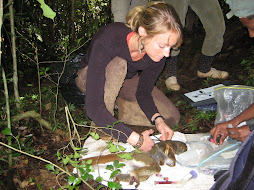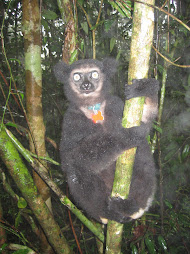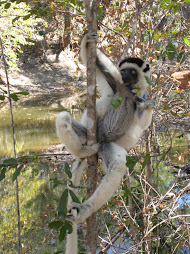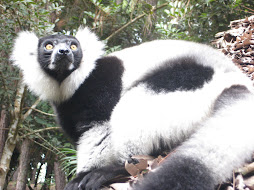Mouse lemurs aren’t the only animals that I’m concerned about out here. Expanding human populations, which push the boundary into preserved areas for resource extraction, hunting, subsistence agriculture and cattle grazing, could lead to potentially huge impacts on the conservation and health of wildlife populations. Where humans go, their domesticated animals typically follow, and where domestic animals go, their parasites are sure to tag along. We can simply look to human history to see the implications of animal domestication. One of the major transitions in lifestyle occurred about 10,000 years ago as agriculture developed. By producing our own food and domesticating animals, humans were able to rapidly increase their populations, and began to live in denser aggregations like towns and cities.  This increased density, along with the mixing of multiple species (humans and livestock) in a small area lead to an upsurgence of disease. Over 600 known parasites occur in domesticated animals, and over 60% of the over1400 parasites found in humans have come from a domestic animal origin. To make matters worse, all of these densely packed people and livestock attract another player into this equation—rodents. And as we all have learned from the 14th century’s Black Death, rodents are exceptional couriers of disease. Unfortunately, all of these issues are important to consider for conservation in
This increased density, along with the mixing of multiple species (humans and livestock) in a small area lead to an upsurgence of disease. Over 600 known parasites occur in domesticated animals, and over 60% of the over1400 parasites found in humans have come from a domestic animal origin. To make matters worse, all of these densely packed people and livestock attract another player into this equation—rodents. And as we all have learned from the 14th century’s Black Death, rodents are exceptional couriers of disease. Unfortunately, all of these issues are important to consider for conservation in  Villages on the edge of reserves raise and graze their cattle through preserved areas, their dogs and cats wander through, and even humans leave their waste in the reserves. Additionally, the black rat (Rattus rattus) has expanded to cover the entire island since its accidental introduction in
Villages on the edge of reserves raise and graze their cattle through preserved areas, their dogs and cats wander through, and even humans leave their waste in the reserves. Additionally, the black rat (Rattus rattus) has expanded to cover the entire island since its accidental introduction in
Sunday, September 28, 2008
Cows and dogs and rats, oh my!
Prepared August 29, 2008
Subscribe to:
Post Comments (Atom)

.jpg)
.jpg)
.jpg)
.jpg)
.jpg)
1 comment:
To create a such kind of article is really amazing,I daily read your blogs and give my announcement for that here this article is too great and so entertaining.
Post a Comment